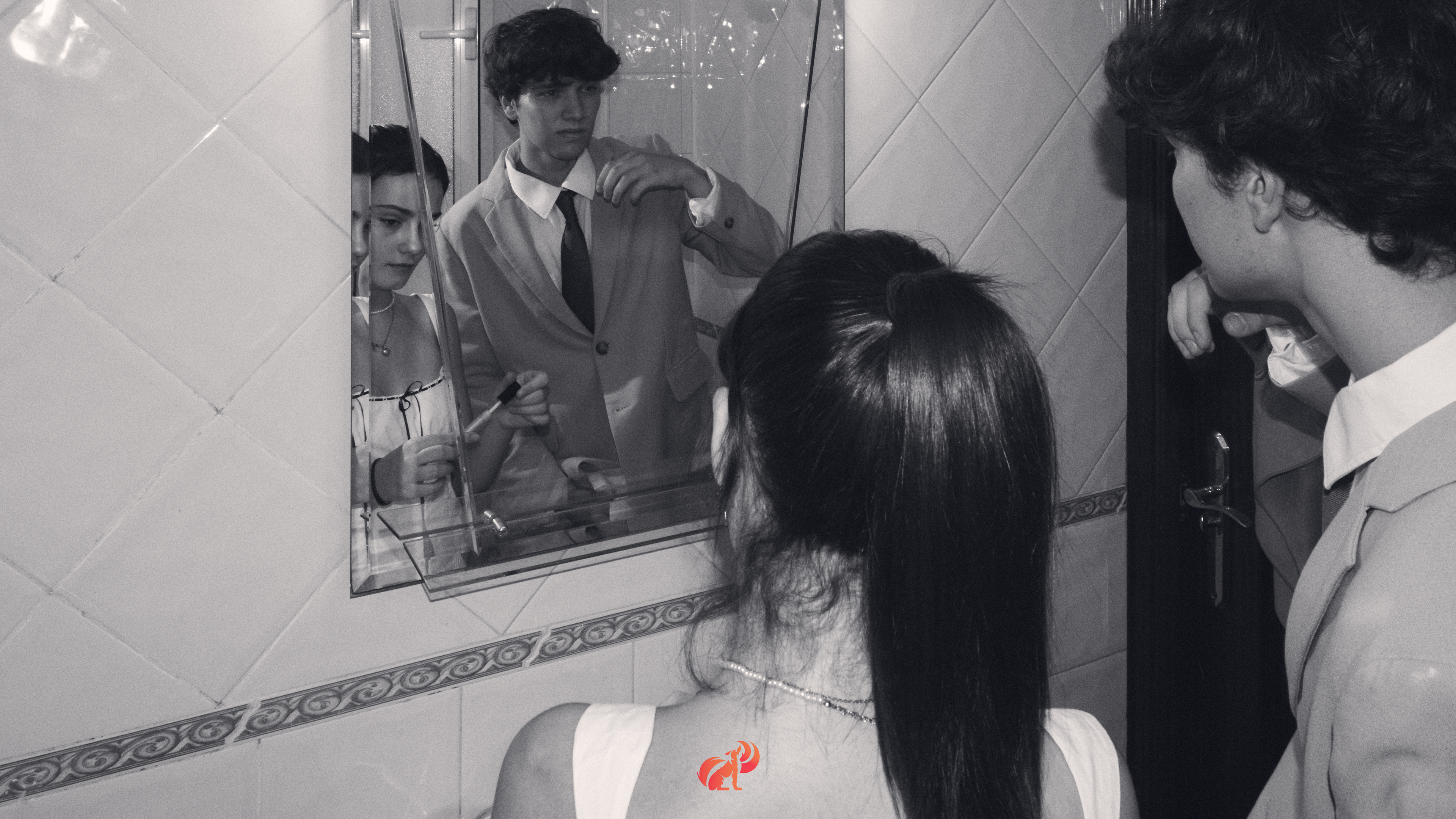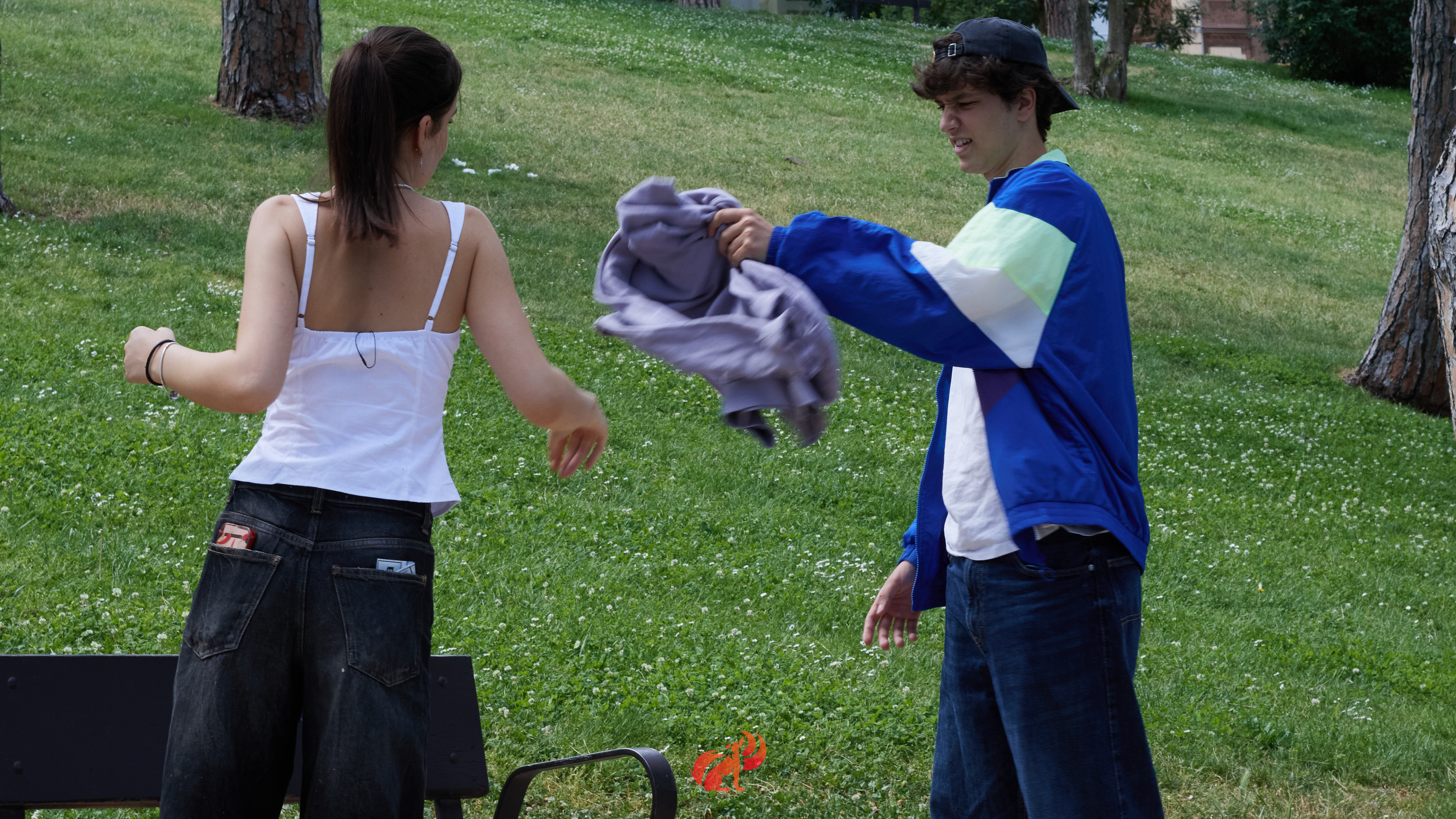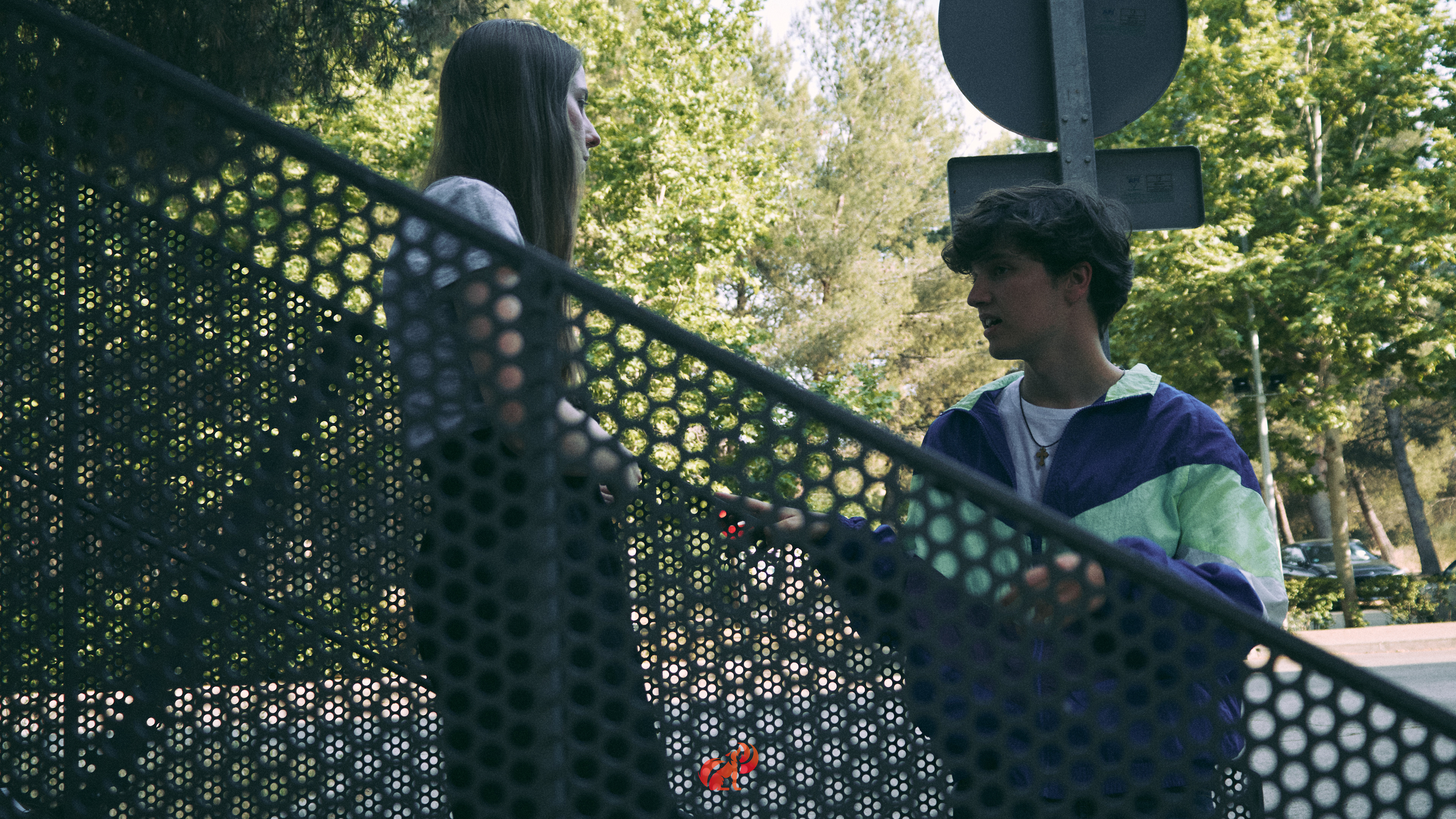PROJECT STATEMENT
ESP
.mp3 es un proyecto que se sustenta en las teorías de la adaptación y la intertextualidad. Linda Seger en su obra El arte de la adaptación. Cómo convertir hechos y ficciones en películas define la adaptación como:
“(…) la adaptación es una traslación, una conversión de un medio a otro. Todo material previo -literario o no- se resistirá en principio a un cambio, como si dijera: “tómame tal como soy”. Pero la adaptación implica un cambio. Implica un proceso que supone repensar, reconceptualizar; y también, comprender que la naturaleza del drama es intrínsecamente diferente de la de cualquier otra forma literaria.” (Seger, 1993: 30).
Por lo tanto, se podría decir que la adaptación consiste en realizar una obra nueva a raíz de una que ya existe, una idea que encaja a la perfección con el concepto de intertextualidad, traído por los estructuralistas.
La intertextualidad defiende la interrelación entre diferentes elementos artísticos, pero no trata de buscar el significado de un signo, sino de cómo este se significa, para quién y en qué contexto. No existen textos sin contexto.
Para los postestructuralistas todos los textos -entendiendo estos como cualquier pieza artística, no necesariamente literaria- están siempre abiertos, todo parte de algo sobre lo que otros han ideado anteriormente ya que el acto interpretativo siempre está en progreso. Por lo tanto, todo lector es en parte autor y todo autor ha tenido que ser necesariamente lector.
.mp3 es un proyecto que trabaja la adaptación y la intertextualidad entre música y fotografía, inspirandome en piezas musicales he ido creando series fotográficas, cada una con un statement concreto y un trasfondo diferente.
ENG
.mp3 is a project based on the theories of adaptation and intertextuality. Linda Seger in her work The Art of Adaptation. How to turn fact and fiction into film she defines adaptation as:
‘(...) adaptation is a translation, a conversion from one medium to another. All previous material - literary or not - will in principle resist change, as if to say: ‘take me as I am’. But adaptation implies change. It involves a process that involves rethinking, reconceptualising; and also, understanding that the nature of drama is intrinsically different from that of any other literary form.’ (Seger, 1993: 30).
Therefore, adaptation could be said to consist in making a new work out of an existing one, an idea that fits perfectly with the concept of intertextuality, brought by the structuralists.
Intertextuality defends the interrelation between different artistic elements, but it is not about looking for the meaning of a sign, but about how it is signified, for whom and in what context. There are no texts without context.
For poststructuralists all texts - understood as any piece of art, not necessarily literary - are always open-ended, everything starts from something that others have previously devised, since the interpretative act is always in progress. Therefore, every reader is partly an author and every author has necessarily had to be a reader.
.mp3 is a project that works on the adaptation and intertextuality between music and photography. Inspired by musical pieces, I have been creating photographic series, each one with a specific statement and a different background.
HAIL TO THE QUEEN
ESP
Hail to the Queen consiste en una serie de piezas inspiradas en el álbum Hail to the King escrito y producido por la banda de heavy metal Avenged Sevenfold.
Sin embargo, aunque Hail to the King sea la principal influencia y motivación del proyecto se podrán observar inspiración de otras obras y autores de la literatura gótica de terror del siglo XIX como Edgar Allan Poe o Mery Shelly; y de la fantasía épica, tales como Canción de Hielo y Fuego o El Señor de los Anillos.
Hail to the King nos muestra un mundo devastado y destruido por la guerra, gobernado por un rey autoritario: es el pueblo el que sufre las consecuencias.
Esto lo podemos ver tanto a nivel lírico como a nivel musical, nos encontramos con instrumentos claros y limpios, riffs muy potentes y una continuidad sonora que favorece a la narratividad de las letras. Asimismo, podemos ver claras influencias musicales de las grandes bandas del género como Metallica, Led Zeppelin o Guns and Roses.
Hail to the queen nos presenta a un personaje femenino fuerte que ha luchado por el trono que le corresponde por derecho y que le había sido arrebatado por un tirano: quiere alzarse como reina para devolver la paz a las tierras.
La serie se divide en tres dípticos: el primero es una presentación del personaje principal, el segundo se corresponde a la muerte del rey, y el tercero (y último) al alzamiento de la reina.
El personaje de la reina encaja estéticamente con la figura prototípica de mujer bruja que juega con la magia negra; en definitiva, es un tipo de personaje femenino que llevamos viendo históricamente de forma recurrente. Nos las encontramos desde las leyendas más ancestrales hasta personajes más actuales de la literatura y el cine.
El mejor ejemplo de este tipo de mujer es la figura de Morgana del círculo de leyendas artúricas, hermanastra del rey Arturo y aprendiz de Merlín. Según los escritos que escojamos podemos verla representada como una curandera y mujer sabía que domina la brujería o como una hechicera tenebrosa enemiga de su hermano.
Estamos acostumbrados a que este tipo de personajes femeninos que encarnan a una bruja oscura y tenebrosa está hilado con las ideas de autoritarismo y destrucción, siempre son el personaje malévolo que arrasa el reino con el poder de la magia. Sin embargo, esta serie quiere romper con ello, por una vez la bruja tenebrosa, oscura y gótica será que la salve al reino.
ENG
Hail to the Queen consists of a series of pieces inspired by the album Hail to the King written and produced by the heavy metal band Avenged Sevenfold.
However, although Hail to the King is the main influence and motivation of the project, inspiration from other works and authors of 19th century gothic horror literature such as Edgar Allan Poe or Mery Shelly; and from epic fantasy, such as A Song of Ice and Fire or Lord of the Rings, can be observed.
Hail to the King shows us a world devastated and destroyed by war, ruled by an authoritarian king: it is the people who suffer the consequences.
This can be seen both lyrically and musically, with clean and clear instruments, powerful riffs and a sonic continuity that favours the narrative of the lyrics. Likewise, we can see clear musical influences of the great bands of the genre such as Metallica, Led Zeppelin or Guns and Roses.
Hail to the queen introduces us to a strong female character who has fought for her rightful throne, which had been taken away from her by a tyrant: she wants to rise as queen to restore peace to the land.
The series is divided into three diptychs: the first is a presentation of the main character, the second corresponds to the death of the king, and the third (and last) to the rise of the queen.
The character of the queen fits aesthetically with the prototypical figure of the female witch who plays with black magic; in short, she is a type of female character that we have been seeing recurrently throughout history. We find them from the most ancient legends to the most current characters in literature and cinema.
The best example of this type of woman is the figure of Morgana from the Arthurian circle of legends, half-sister of King Arthur and apprentice of Merlin. Depending on the writings we choose, we can see her represented as a healer and wise woman who masters witchcraft or as a dark sorceress who is her brother's enemy.
We are used to this type of female character who embodies a dark and dark witch, and we are used to the idea of authoritarianism and destruction; they are always the malevolent character who devastates the kingdom with the power of magic. However, this series wants to break with that, for once the dark, dark and gothic witch will be the one to save the kingdom.






EL ÚLTIMO TREN
El último tren is a photographic series based on the album ‘Hensito’ by Spanish urban artist Hens, released in 2021.
The artist has defined this album as autobiographical on several occasions and has described it as ‘an album full of truth and emotions’. The album deals with feelings and sensations as human as failure, emotional emptiness and apathy. It also delves into sentimental and romantic relationships, especially those that are totally destructive but keep us hooked; and it also goes through the feelings that a person has when a break-up occurs.
The series, in line with the album, takes a journey through the end of a toxic relationship and the feelings that are generated during the mourning phase.
The protagonist of the photographic series has a need to fix the relationship and return to his partner, the nostalgia of good memories takes over: he wants to start from scratch.
However, at the same time as the nostalgia consumes him, he is fully aware that he has been giving too much and has been made to feel less, of the mental exhaustion of being in such a relationship and how it has consumed him.
Little by little the coldness takes hold of him, the emptiness he feels is immense and he doesn't know how to fill it. Alcohol, tobacco, drugs, sex and partying end up becoming the things that rule the young man's life.
However, they are not a real help to fill the inner emptiness, but only worsen the relationship he has with himself: the nostalgia that any time in the past was better, the memory of who he was and the reality of who he has become is killing him. He does not recognise himself.
He promises himself to change, to make things better, to move away from what consumes him. You promise to change, but in the end not everything is as easy as it seems and harmful habits drag you down day by day, not letting you get out of the pit you are in.














